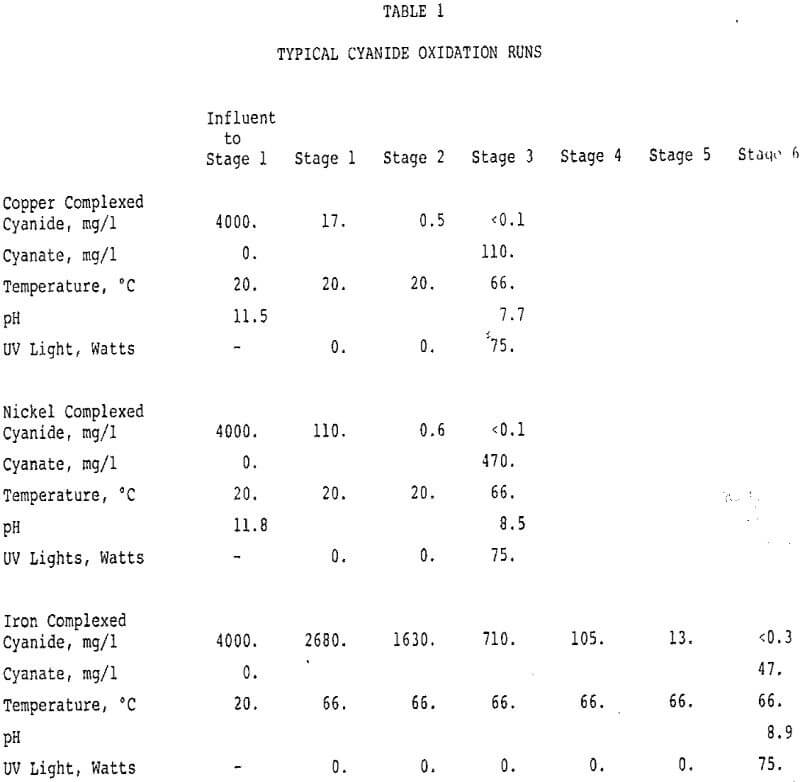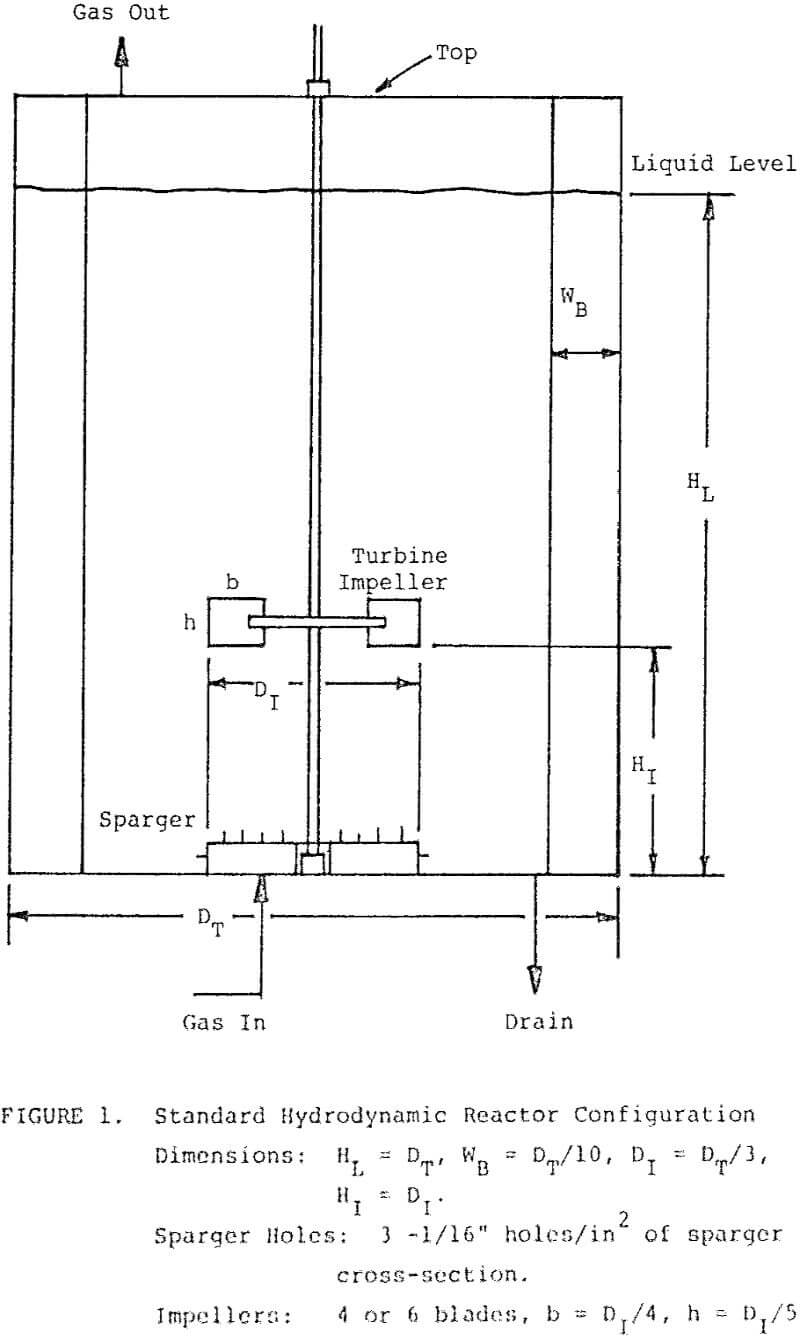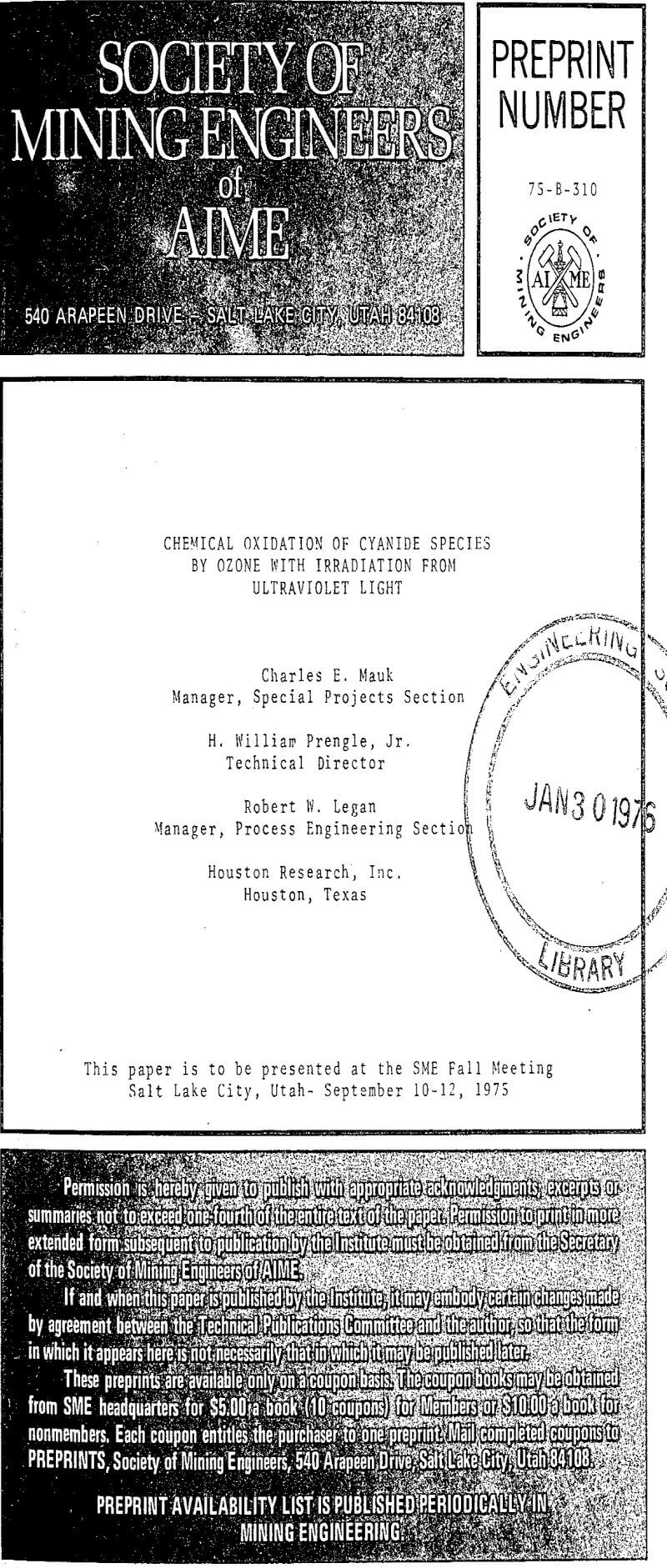Before the work was started, a review was made of possible oxidative and disposal processes, including: evaporation, ponding, lime-sulfur treatment, acidification-aeration, ion exchange, biological oxidation, permanganate oxidation, dichromate oxidation, hydrogen peroxide oxidation, electrolytic oxidation; but it was obvious that only ozone and alkaline chlorination had any significant potential for this application.
After selecting ozone as the best oxidizing agent for the investigation, the laboratory experimentation began with ozone treatment of free and various complexed cyanides in a semibatch sparged reactor. The pure free cyanide concentration is reduced to zero at a rate corresponding to the stoichiometric addition of ozone to the reactor. The cadmium, copper, and nickel complexed cyanides are all rapidly destroyed during the initial portions of the runs, but later in the run, the reaction rate has slowed so much that the cyanide remains at an almost constant value. This “plateau” corresponds to the amount of cyanide which would be complexed with the iron found to be present. This established that ozone alone reacted satisfactorily fast with free cyanide and metal complexed cyanide, other than iron.
Mathematical models of chemical reaction and mass transfer were developed and the data on chemical reaction rate, mass transfer, and ozone autodecomposition, obtained from the laboratory study, were used to design a staged, continuous flow reaction system. The system was used to treat various concentrations and types of waste cyanide solutions. The HR work with ozone-UV has demonstrated several important advantages of the multistaged reaction system over the conventional single reaction stage. For concentrated waste, the rate of oxidation is limited by the rate at which ozone is transferred from the gas phase to the water, but the rate of oxidation of dilute waste may be limited by the chemical reaction rate.
The UV intensity is important and should also be optimized. In proper hydrodynamic staging, with high interfacial area for mass transfer, sufficient UV should be used to obtain a high chemical reaction rate, and mass transfer will become the limiting factor.



